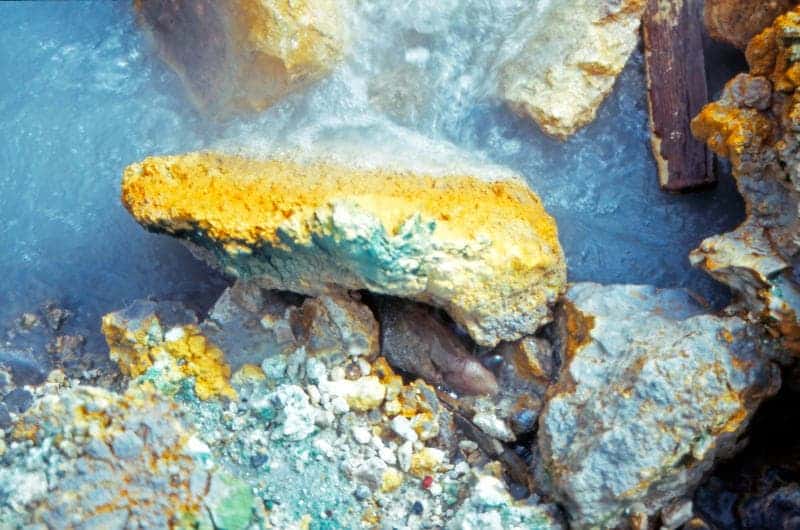Life finds a way – the red alga Galdieria sulphuraria gives a really good argument to support that statement. In the hot springs of Yellowstone Park, it uses photosynthesis to produce its necessary nutrients. But in dark, murky, toxic mineshafts in drainage that are about as acidic as battery acid, not only does it survives, but it thrives on eating bacteria.
How can a single celled algae evolve to support such different conditions? Gerald Schoenknecht of Oklahoma State University and Andreas Weber and Martin Lercher of Heinrich-Heine-Universit set out to answer that questions, and their answers were quite shocking.
They were part of a team that figured out how Galdieria‘s genome shows clear signs of borrowing genes from its neighbors. The genetic adaptations to such conditions was not inherited, but it was rather acquired from bacteria or archaebacteria. This makes Galdieria the first known organism with a nucleus (called a eukaryote) that has adapted to such extreme environments by borrowing genes.
The age of comparative genome sequencing began only slightly more than a decade ago, and revealed a new mechanism of evolution–horizontal gene transfer–that would not have been discovered any other way,” says Matt Kane, program director in the National Science Foundation’s (NSF) Division of Environmental Biology, which funded the research. This finding extends our understanding of the role that this mechanism plays in evolution to eukaryotic microorganisms.”
For example, its extremely high heat tolerance stems from genes that exist in hundreds of copies in its genome, all descending from a single gene the alga copied millions of years ago from an archaebacterium.
“The results give us new insights into evolution,” Schoenknecht says. “Before this, there was not much indication that eukaryotes acquire genes from bacteria.”
Other “skills” the algae has (say resistance to salt, mercury and arsenic) were also swiped from bacteria.
“Why reinvent the wheel if you can copy it from your neighbor?” asks Lercher. It’s usually assumed that organisms with a nucleus cannot copy genes from different species–that’s why eukaryotes depend on sex to recombine their genomes. How has Galdieria managed to overcome this limitation? It’s an exciting question.”
But aside for the algae itself, the implications for biotechnology are huge! Just imagine, “stealing” the adaptation from your food, that definitely sounds like something you want to take a better look at.
“Galdieria has acquired genes with interesting properties from different organisms, integrated them into a functional network and developed unique properties and adaptations.”











